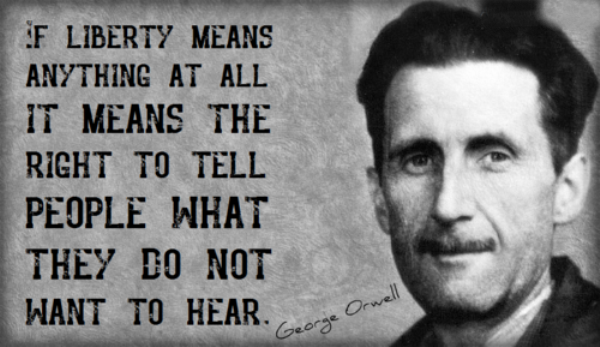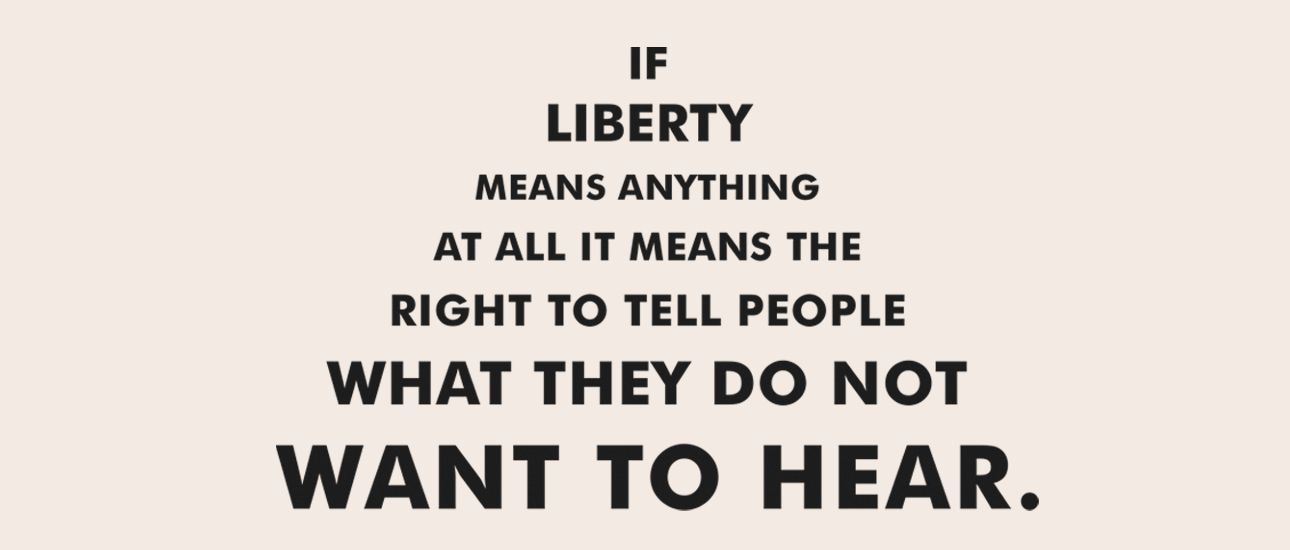 What Does An Asian American Band Called THE SLANTS Have To Do…..
What Does An Asian American Band Called THE SLANTS Have To Do…..
With Telling Police FUCK YOU?
THE RIGHT TO SPEAK OFFENSIVELY ABOUT PERSONS, INSTITUTIONS, BELIEFS OR NATIONAL SYMBOLS
Speech may not be censored solely because some find it offensive. Justice Samuel Alito, joined by Chief Justice John G. Roberts Jr., Justice Clarence Thomas and Justice Stephen G. Breyer, in which Justice Gorsuch did not participate, declared that there is no offensive or hate speech exception to the First Amendment:
[The idea that the government may restrict] speech expressing ideas that offend … strikes at the heart of the First Amendment. Speech that demeans on the basis of race, ethnicity, gender, religion, age, disability, or any other similar ground is hateful; but the proudest boast of our free speech jurisprudence is that we protect the freedom to express “the thought that we hate.” Matal v. Tam, 582 U.S. ___ (2017) (provisions of the Lanham Act’s prohibiting the registration of trademarks that may “disparage” persons, institutions, beliefs, or national symbols violates the First Amendment), aff., In re Tam, 808 F.3d 1321 (Fed. Cir. 2015).
Similarly, the concurring opinion by Justice Anthony M. Kennedy, joined by Justices Ruth Bader Ginsburg, Sonia Sotomayor and Elena Kagan, agreed that sanitizing speech in the name of neutrality violates the First Amendment:
[The Government argues] that the law is viewpoint neutral because it applies in equal measure to any trademark that demeans or offends. This misses the point. A subject that is first defined by content and then regulated or censored by mandating only one sort of comment is not viewpoint neutral. To prohibit all sides from criticizing their opponents makes a law more viewpoint based, not less so. … The logic of the Government’s rule is that a law would be viewpoint neutral even if it provided that public officials could be praised but not condemned. The First Amendment’s viewpoint neutrality principle protects more than the right to identify with a particular side. It protects the right to create and present arguments for particular positions in particular ways, as the speaker chooses. By mandating positivity, the law here might silence dissent and distort the marketplace of ideas.
The Government next suggests that the statute is viewpoint neutral because the disparagement clause applies to trademarks regardless of the applicant’s personal views or reasons for using the mark. Instead, registration is denied based on the expected reaction of the applicant’s audience. In this way, the argument goes, it cannot be said that Government is acting with hostility toward a particular point of view. For example, the Government does not dispute that respondent seeks to use his mark in a positive way. Indeed, respondent endeavors to use The Slants to supplant a racial epithet, using new insights, musical talents, and wry humor to make it a badge of pride. Respondent’s application was denied not because the Government thought his object was to demean or offend but because the Government thought his trademark would have that effect on at least some Asian-Americans.
The Government may not insulate a law from charges of viewpoint discrimination by tying censorship to the reaction of the speaker’s audience. The Court has suggested that viewpoint discrimination occurs when the government intends to suppress a speaker’s beliefs … but viewpoint discrimination need not take that form in every instance. The danger of viewpoint discrimination is that the government is attempting to remove certain ideas or perspectives from a broader debate. That danger is all the greater if the ideas or perspectives are ones a particular audience might think offensive, at least at first hearing.
Thus, speech that some view as racially offensive is protected not just against outright prohibition but also against lesser restrictions. The Matal court emphasized that “the public expression of ideas may not be prohibited merely because the ideas are themselves offensive to some of their hearers.” Street v. New York, 394 U. S. 576, 592 (1969)
This is considered a bedrock principle underlying the First Amendment. Justice William J. Brennan wrote in holding that flag burning is a form of offensive speech protected by the Constitution, “[i]f there is a bedrock principle underlying the First Amendment, it is that the government may not prohibit the expression of an idea simply because society finds the idea itself offensive or disagreeable.” Texas v. Johnson, 491 U.S. 397, 414, 1989. This is because “…debate on public issues should be uninhibited, robust, and wide-open and it may well include vehement, caustic, and sometimes unpleasantly sharp” speech. New York Times v. Sullivan, 376 U.S. 254, 270 (1964)
Thus, the Supreme Court has protected the ability of an individual to wear the offensive message “Fuck the Draft” on the back of his jacket in a Los Angeles courthouse. In Cohen v. California, 403 U.S. 15 (1971) the Court wrote “it is largely because governmental officials cannot make principled distinctions in this area that the Constitution leaves matters of taste and style so largely to the individual.”
Following in the footsteps of Cohen’s protection, a federal appellate court held that the First Amendment protects racist speech-speech offensive to minorities and, for that matter, to many Caucasians-conveyed anonymously via the telephone to a public official. In United States v. Popa, 187 F.3d 672 (D.C. Cir. 1999) the defendant called Eric Holder, then the United States Attorney for the District of Columbia, “a criminal, a negro” and “a whore, born by a negro whore.” Writing for a unanimous panel, Judge Ginsburg reversed the conviction: punishing the speech violated the Supreme Court’s First Amendment test in United States v. O’Brien, 391 U.S. 367 (1968), he reasoned, such that the statute was unconstitutional as applied to those facts. First Amendment protected such offensive bile from prosecution under a federal law restricting telephonic harassment. Likewise, two weeks before the 2008 election, a California man left a vicious message about Barack Obama on a Yahoo finance message board. “Re: Obama fk the niggar, he will have a 50 cal in the head soon.” He followed it up with another ugly post, which began simply: “Shoot the nig.” U.S. v. Bagdasarian, 652 F.3d 1113, 1115 (9th Cir. 2011). The Ninth Circuit held that such statements were only menacing. The statements were not a “true threat” — which the court defined as a statement which, in the entire context and under all the circumstances, a reasonable person would foresee would be interpreted by those to whom the statement is communicated as a serious expression of intent to inflict bodily harm upon that person.” Id. at 1119.
Offensive speech does not lose its protection just because it may be directed to a police officer. The First Amendment, U.S. Const. amend. I, protects a significant amount of verbal criticism and challenge directed at police officers. Speech is often provocative and challenging, but it is nevertheless protected against censorship or punishment, unless shown likely to produce a clear and present danger of a serious substantive evil that rises far above public inconvenience, annoyance, or unrest. City of Houston, Texas v. Hill, 482 U.S. 451, 461 (1987)
In State of South Dakota v. Suhn, 2008 SD 128 (SD 2008) the South Dakota Supreme Court protected the speech of a man who yelled the following at a passing police cruiser as the bars let out around 2 a.m. in Brookings: “Fucking cop, piece of shit. You fucking cops suck. Cops are a bunch of fucking assholes.” In ruling for Marcus J. Suhn, the court wrote that “just because someone may have been offended, annoyed or even angered by Suhn’s words does not make them fighting words.” See also, City of Bismark v. Schoppert, 469 N.W.2d 808 (North Dakota 1991) (defendant who referred to police officer as “fucking, bitching cop,” and replied “fuck you” to an officer’s request for identification could not be convicted of disorderly conduct.) In Merenda v. Tabor, No. 12-12562, Non-Argument Calendar (11th Circuit 2013) held that the use of a barely audible “fucking asshole” to a law enforcement official was not fighting words and was, instead, protected by the First Amendment. In Duran v. City of Douglas, 904 F.2d 1372, 1377-78 (9th Cir.1990), the Ninth Circuit held that a police officer’s stop of a car from which the appealing defendant was making obscene gestures and yelling profanities at the officer was unlawful because the defendant’s actions were protected by First Amendment. In Brockway v. Shepherd, 942 F.Supp. 1012 (M.D.Pa.1996), the court found that a passenger in a car who extended “his middle finger” at a police officer did not engage in obscene conduct under the Commonwealth’s disorderly conduct statute. See id. at 1016-17. Likewise, in Wisconsin, in State v. Smith, 2013AP2516-CR a defendant was charged with disorderly conduct and with unlawful use of a computerized communication system because he posted two comments on a police department Facebook page that read:
Fuck the fucking cops they ant shit but fucking racist basturds an fucking all of y’all who is racist[.]
Fuck them nigers policy bitchs wat the you got on us not a darn thing so fuck off dicks[.]
Judge Paul Lundsten agreed with Smith and threw out the convictions. Specifically, the judge determined that Smith’s language did not constitute “fighting words” since they were vague, not made to a person’s face and did not produce imminent lawless action. Similarly, when a passing motorist shouted “sooey” to a police officer, he did not violate the statute because there was “no direct face-to-face contact or other exigent circumstances.” Garvey v. State, 537 S.W.2d 709, 711 (Tenn.Crim.App.1975); see also Matter of Welfare of S.L.J., 263 N.W.2d 412, 420 (Minn.1978) (when young girl shouted obscenity to police officer who was standing fifteen feet away “rather than eye-to-eye, there was no reasonable likelihood that [the words] would tend to incite an immediate breach of the peace or to provoke violent reaction by an ordinary, reasonable person”); Hershfield v. Commonwealth, 14 Va.App. 381, 417 S.E.2d 876, 877-78 (1992) (when one neighbor shouted obscenity to another, “distance and barriers” precluded an immediate breach of the peace).
Thus, there is simply no question that the free speech clause protects a wide variety of speech that listeners may consider deeply offensive, including statements that impugn the flag, another’s race or national origin or that denigrate religious beliefs. As Justice Jackson told us, “freedom to differ is not limited to things that do not matter much. That would be a mere shadow of freedom. The test of its substance is the right to differ as to things that touch the heart of the existing order.” West Virginia State Board of Education v. Barnette, 319 U.S. 624 (1943). In the end, it must be understood that the way to expose falsehood and fallacies is more speech, not enforced silence, since freedom to think as you will and to speak as you think are means indispensable to American democracy. Whitney v. California, 274 U.S. 357, 375 (1927), Brandeis, J., concurring.
